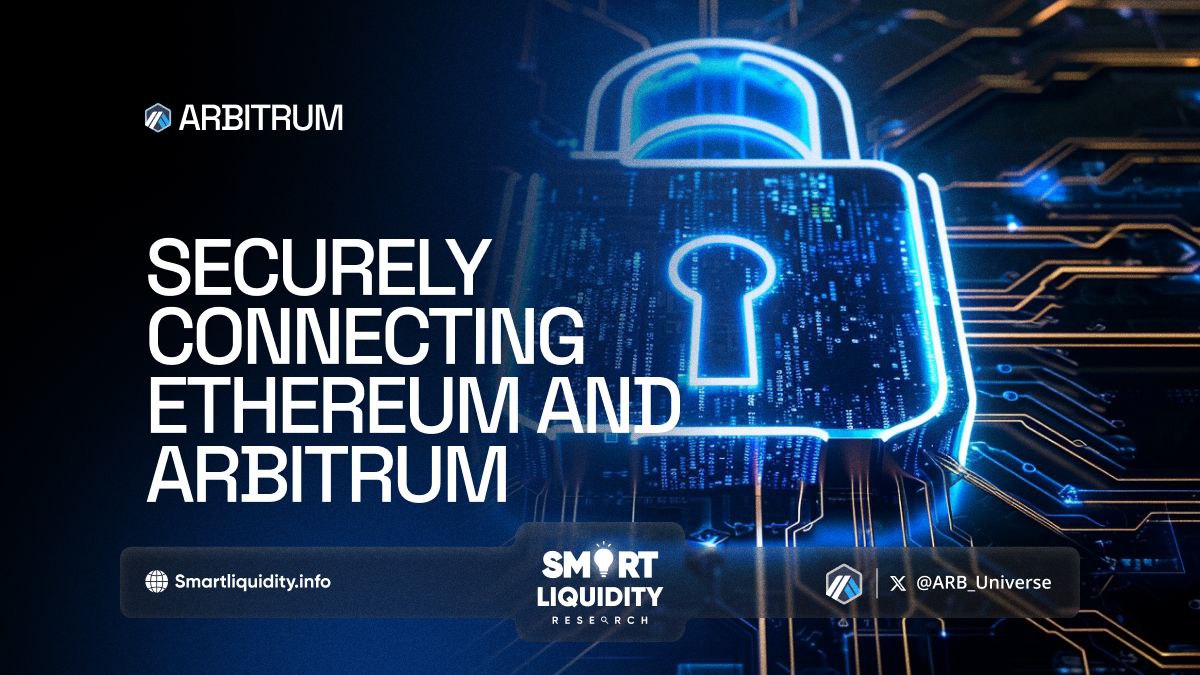Arbitrum Bridge: Securely Connecting Ethereum and Arbitrum


Arbitrum Bridge: Securely Connecting Ethereum and Arbitrum! As the Ethereum ecosystem continues to expand, the need for scalable solutions has become more pressing. Among the most promising developments is Arbitrum, a Layer 2 scaling solution that enhances Ethereum’s capacity by reducing congestion and lowering transaction costs.
Central to this interaction is the Arbitrum Bridge, a critical component that securely connects Ethereum to Arbitrum, enabling seamless transfers of assets between the two networks.
What is the Arbitrum Bridge?
The Arbitrum Bridge acts as a gateway between Ethereum and Arbitrum, allowing users to move their tokens from Ethereum’s Layer 1 to Arbitrum’s Layer 2 and vice versa. This bridge is essential for leveraging Arbitrum’s benefits, such as faster transactions and lower gas fees, without sacrificing the security of the Ethereum mainnet.
How Does the Arbitrum Bridge Work?
The process of transferring assets through the Arbitrum Bridge is straightforward. Users first need to lock their tokens on Ethereum through a smart contract. When tokens are locked, an equivalent amount is minted on Arbitrum for use on the Layer 2 network. Tokens are burned on Arbitrum when moving back to Ethereum, releasing the equivalent amount from the Ethereum smart contract.
The bridge’s design ensures that the process is secure, with robust cryptographic proofs verifying each step. This mechanism not only maintains the integrity of the transferred assets but also ensures that the total supply of tokens remains consistent across both networks.
Security Features of the Arbitrum Bridge
Security is paramount in the Arbitrum Bridge’s design. It employs several advanced features to ensure the safety of user funds and the overall integrity of the bridge:
- Optimistic Rollups
Arbitrum utilizes Optimistic Rollups, a technology that batches multiple transactions together and processes them off-chain, significantly reducing congestion. The optimistic nature of the rollups means that transactions are assumed to be valid unless proven otherwise, which allows for faster processing. Fraud proofs are used to detect and correct any invalid transactions. - Smart Contract Verification
All smart contracts involved in the bridge are rigorously audited to ensure they are free from vulnerabilities. The use of Ethereum’s robust security model provides an additional layer of protection, as any potential issues can be quickly addressed by the community. - Decentralized Validation
The validation of transactions on Arbitrum is decentralized, meaning that multiple validators are involved in confirming the accuracy of transactions. This decentralized approach reduces the risk of a single point of failure, making the system more resilient against attacks.
Benefits of Using the Arbitrum Bridge
- Lower Transaction Costs
By moving assets to Arbitrum, users can benefit from significantly lower gas fees compared to transacting directly on Ethereum. This is especially advantageous for those engaging in frequent transactions or utilizing DeFi protocols. - Faster Transactions
Transactions on Arbitrum are processed much faster than on Ethereum, reducing the time users spend waiting for confirmations. This speed is particularly beneficial for time-sensitive operations, such as trading or participating in token sales. - Enhanced Scalability
Arbitrum’s Layer 2 solution helps alleviate the congestion on the Ethereum network, contributing to a more scalable and efficient blockchain ecosystem. - Security Assurance
With the backing of Ethereum’s security model and the implementation of cutting-edge technologies, users can trust that their assets are safe when using the Arbitrum Bridge.
In Summary
The Arbitrum Bridge is essential for leveraging Arbitrum’s benefits while maintaining Ethereum network security. Its secure, fast, and cost-effective design is crucial for decentralized finance. As Ethereum expands, tools like the Arbitrum Bridge will be vital for network scalability, security, and user accessibility.




